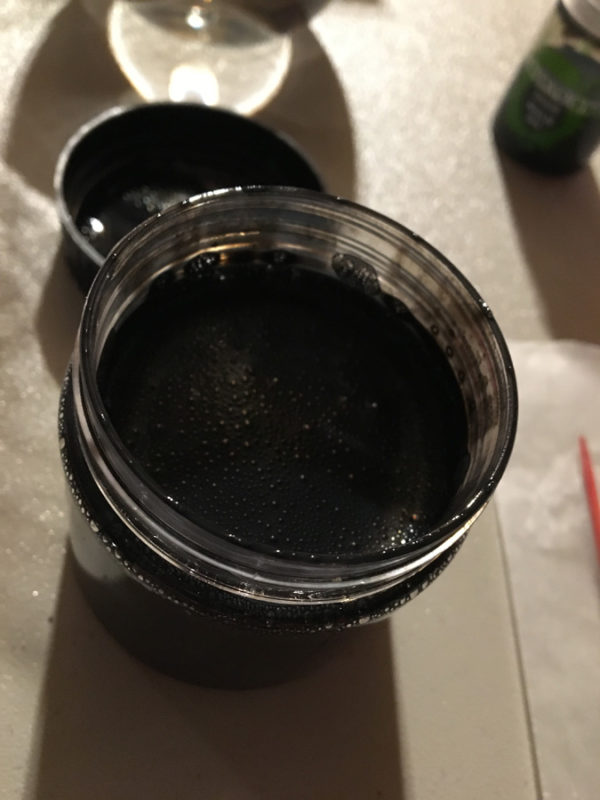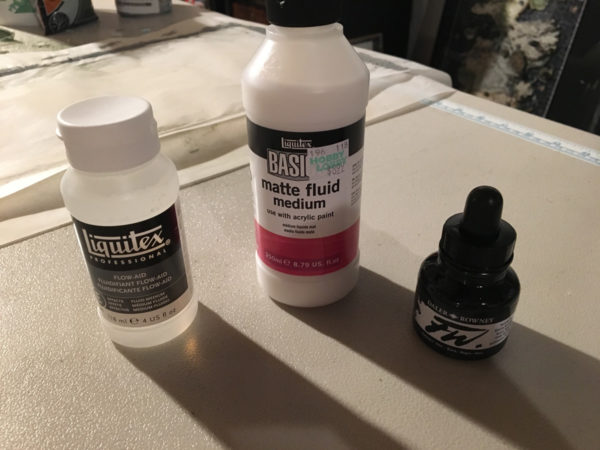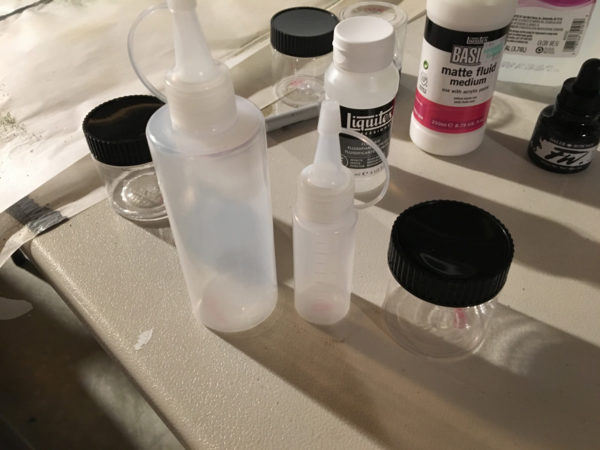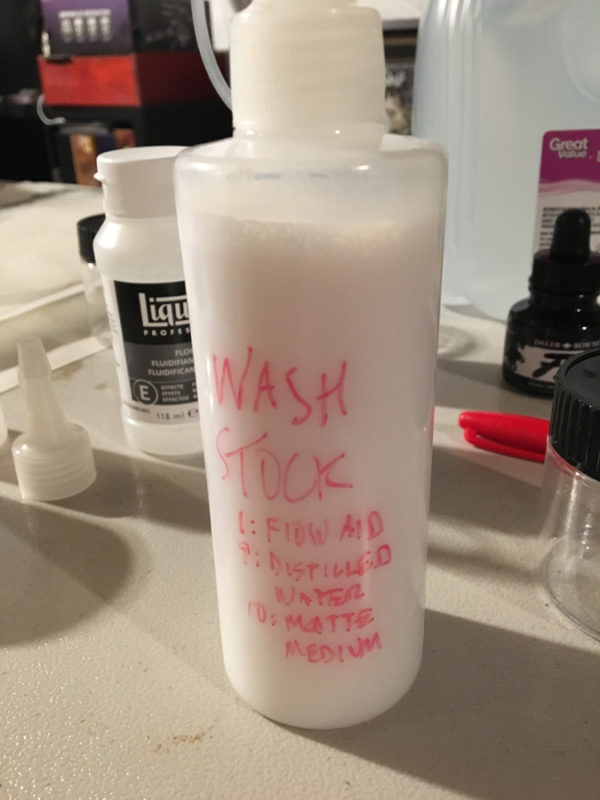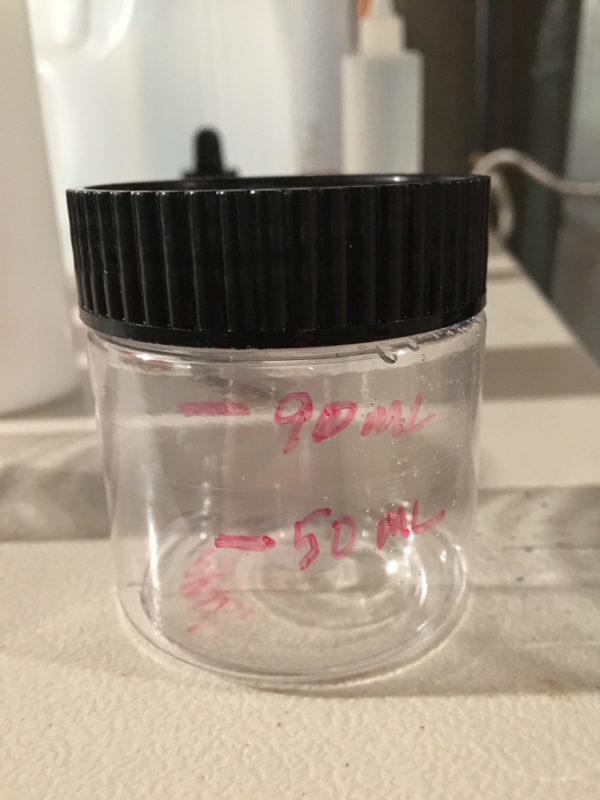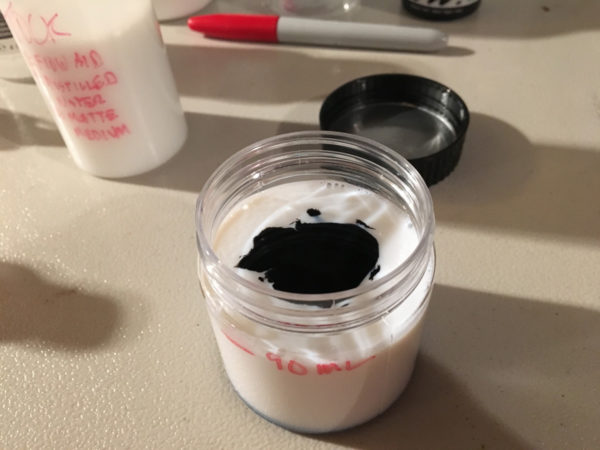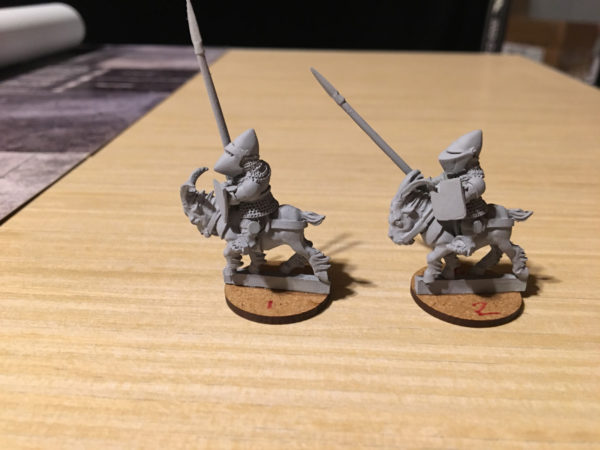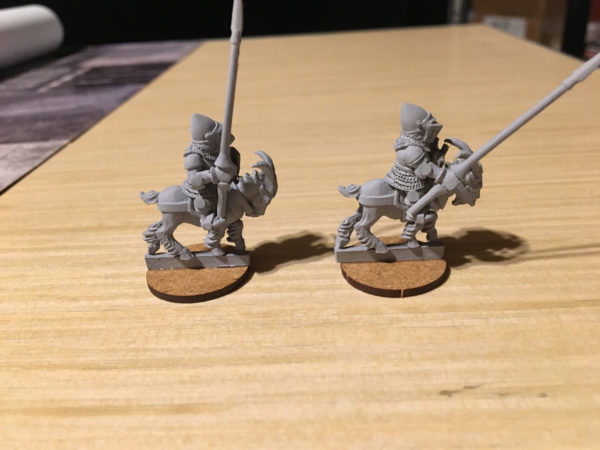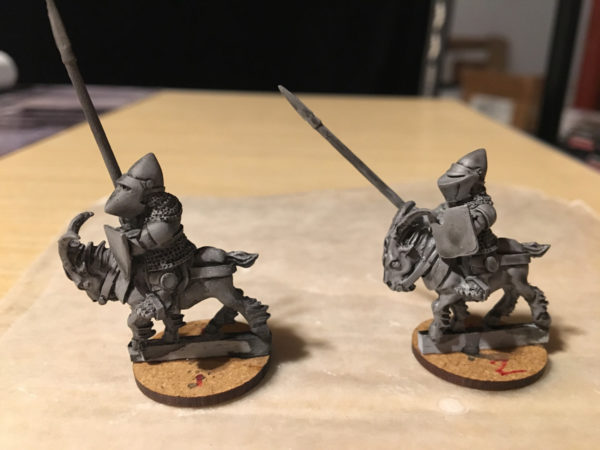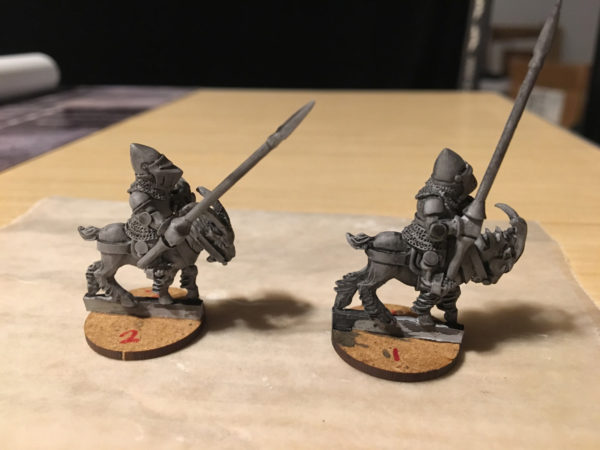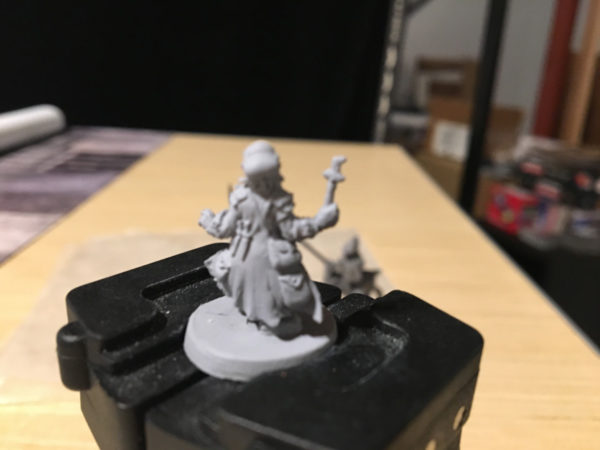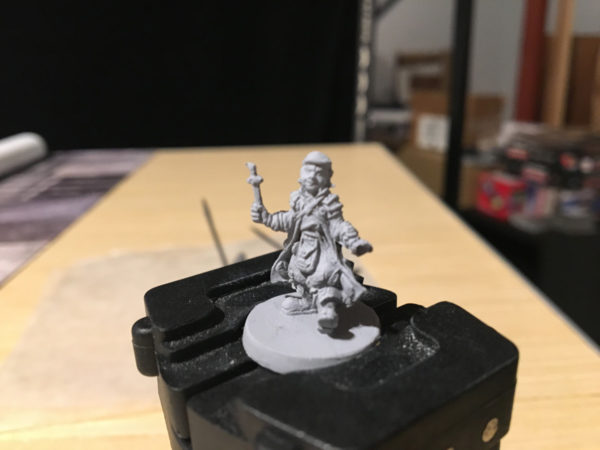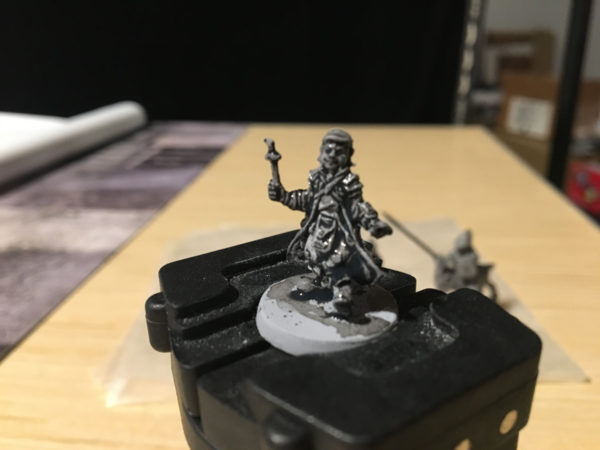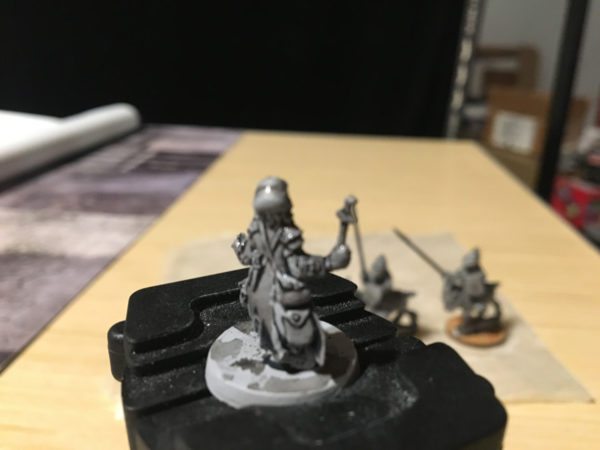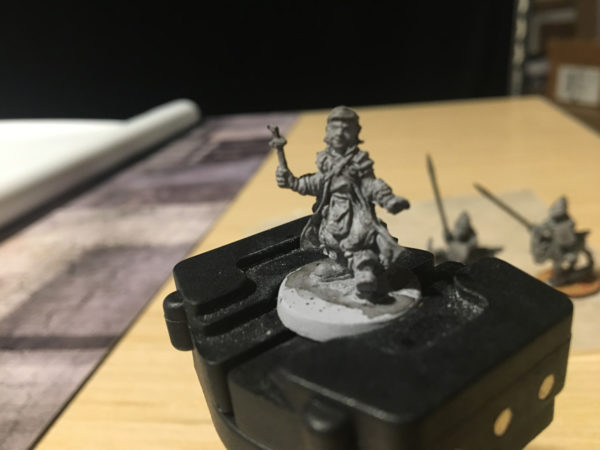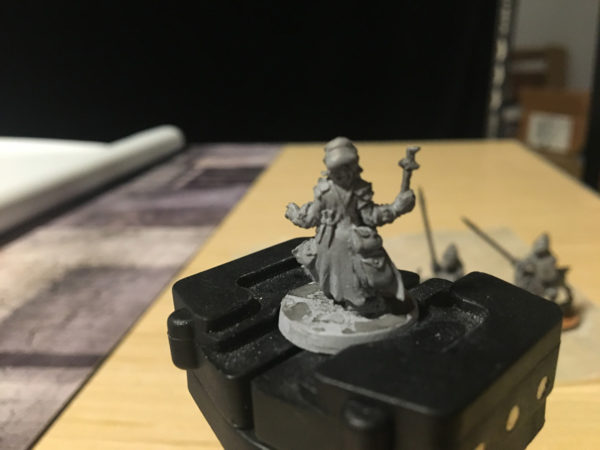Welcome back! I hope everyone had a great Christmas holiday. I used the break to line up a little more of what I needed to do to complete my large Test of Honour terrain piece. The biggest concern I had was how to wash the piece effectively without bulking up on expensive pre-made products. I decided to try my hand at making my own wash to see if it would work.
I went through a lot of sites researching what and how to make your own wash/shade and it seemed to run the gamut of using shoe polish (which I have to imagine would stink horribly) to combining several common craft mediums, making a large batch. I went with the latter option and found this article from The LeadHead very enlightening.
The biggest challenge, initially, was sourcing the different components. I settled on the “Les Bursley” wash recipe as it seemed to match what I expected my common GW Nuln Oil wash to be. I really have no clue what is in GW’s recipe so really the choice came down to wanting to pick up some flow aid and liked the sound of the recipe on a whole. Ironically, I could have really just used dish soap for the flow aid but as we’ll see, I went the most convoluted way possible in this quest to make a wash. The components can be expensive so remember to abuse those Hobby Lobby and Michael’s coupons or source online during the latest sales.
Containers will be necessary as well and I went with some handy ones that featured graduated lines and were in clear milliliter increments. The large tube is 200 ml to hold the main “stock” while the small one is 50 ml to help measure out and combine the chemicals. The jar is 100 ml and will hold the bulk of the actual shade. The LeadHead recommends not using this type of jar as the wash will collect in the threads and make the lid difficult to seal. This is totally true but knowing what I was getting into, I just resolved to make sure I clean the lid and threads after every use.
Using the recommended recipe, I measured out the components as instructed and combined them into the large 200 ml bottle. This means I used 10 ml of flow aid, 90 ml of distilled water, and 100 ml of liquid matte medium.
Using my small 50 ml bottle with graduated markings, I made some rough markings on my jar so that I could make sure to get my measurements correct. Knowing about the thread/wash issue, I didn’t want to fill the container to the top so I measured out 50 ml and 90 ml.
Based on the recommendations laid out in the instructions, I should 40 “drops” of ink per 30 ml of solution. I got dropping and then screwed on the cap to mix.
mmmm. Black sludge. Hope this works.
Time to test it out. I have two primed models of some Halfling mounted knights that I won’t need so I decided they’d be my test subjects. I’ll be comparing my black wash to GW’s Nuln Oil (since I like it so much).
After working both models, I let them dry and snapped some pictures. Care to guess which is the Nuln Oil and which is my custom brew? I found that I had to cheat a little bit. When I applied my brew to the model, I found it unacceptably thick and cloying. I didn’t want to end up with a black coated mini so after washing it, I quickly cleaned the brush and soaked it in water, then washed the mini again with the wet brush. This helped dilute the custom brew into something I felt like I could work with. I had to work quickly as I didn’t want the wash to set too much.
The Nuln Oil needed no extra work. It did, however, take several dunks into the well to coat the whole model. My custom brew only needed one dip and even that was too much. So in regards to coverage, my custom brew comes through a winner but the Nuln Oil was easier to use. This could also be because I use Nuln Oil all the time so I’m used to how it behaves. Either way, as is, the custom brew needed refining, namely it needed to thin out. Oh and figure #1 is my custom brew and #2 was the Nuln Oil.
Round 2: FIGHT! For version 1.1 of my custom brew, I poured 40 ml of the original black wash into a separate jar and diluted it with another 40 ml of distilled water. After mixing, I found the brew had thinned out respectably and wasn’t coating the inside of the jar as badly as before.
I had another primed mini ready for experimentation, this time from Descent. I won’t have a comparison model but you can always reference back to the #2 knight above.
Since I cheated last time and “worked” the wash quite a bit, I thought I’d run through several images as I worked. Here we have the new v1.1 brew directly applied to the mini. I didn’t dilute any further and didn’t bother wicking away the excess wash.
I wasn’t going to leave the wash on that thickly (though maybe I should have, for science!) so I worked the model a bit more. I didn’t need to wash my brush out and dilute on the model but I did clean it out to work the medium all around and even out the coloring. Curiously, there were spots where the brew just didn’t want to go. I’ve seen this happen with Nuln Oil but usually on a satin or smooth finished paint texture.
After evening things out and letting it dry, I wash pleased with the results. I didn’t have to resort to washing things off the model as badly but it also seemed to coat a little too evenly. I may have overworked the shade on the model and evened things out too much. I think the solution could use a little more thinning but I don’t want to muck with it too much or I won’t be able to accurately duplicate it.
At this stage, I definitely feel like the v1.1 brew is good enough for washing terrain. I’m not sure if I want to use it on minis yet so I might tweak the recipe some more with a new batch and see if I can’t find a solution I life for detailed figures. I did find it interesting that following the recipe online yielded almost unusable results. I’ve seen comparison images following the recipe and they didn’t match my experience at all. I might have a different kind of ink or put too much in or something else. Diluting the recipe considerably did bring it back to a useful state so I’m glad it worked out. Since you have to buy these items in large quantities, I’ll have plenty of stock to experiment with.

